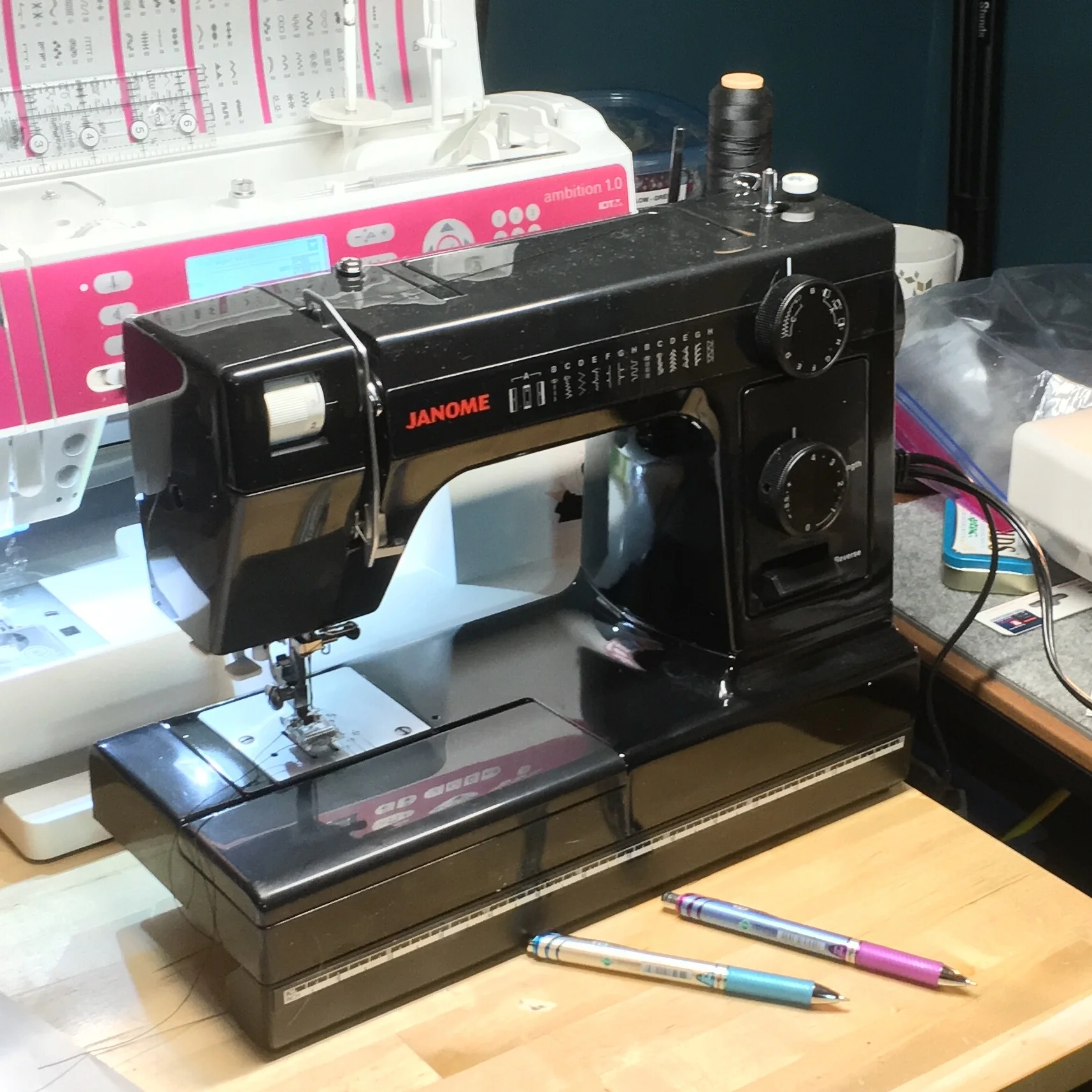Favorite tools: Floss Threader (and a serger tip!)
I hate needle threaders.
You know, these stupid things?
I typically have a few laying around my house that came free with something else, and I'll use them every now and then if I absolutely have to, but I hate them. They're so flimsy and I always pull the wire thing out of the metal thing, and getting the wire thing through the needle eye is no easier than getting thread through a needle eye. They're just not worth my time or effort.
But every now and then I find myself in a situation where I need a needle threader. And for that, I turn to the toothpaste aisle of my local grocery store, and to the GUM Eez-Thru Floss Threader.
This thing is made, I think, for threading dental floss through braces. It's basically a midweight monofilament loop fused together at the end. The monofilament is a little thick, so it won't fit through all needles, but it is still a million times better than the dumb metal and wire ones! They come 25 to a pack, include a neat case, and only cost about $5 per pack. They are sturdy and reusable, but eventually the fused end will split. But in my experience, it takes a while for that to happen. You're more likely to lose one in a pile of fabric scraps than to have one split!
Here's why I originally bought it, and where it fails: Threading serger needles.
The needles on my serger are hard to thread. They're so close to the side of the machine, and so close to the little door thingy in front, and so close to the big presser foot mechanism, that I have a hard time getting the thread angled the way it needs to be angled to go into the needle. And I always - ALWAYS - have to use tweezers to catch the thread on the backside of the needle and pull it through. There has to be a better way, right? So I tried the floss threader, thinking the monofilament would be stiff enough that it would be easy to thread through the needle, and then easy to pull the thread the rest of the way through.
It was a solid theory, but, unfortunately, wrong. The needle eyes were too small for the monofilament. Oh well, back to the tweezers. But I'm still looking for a better serger threading tool.
While they didn't work for threading the serger, they turned out to be great for finishing a serge! You know the thing where you feed your serger thread tail into the seam to hide it? These things are PERFECT for that needle-threading situation, and any other time you find yourself needing to thread multiple strands of thread through your needle.
Here's how I clean up my serger thread ends:
Leave about a 4 inch thread tail when you finish your edge.
Using the floss threader, thread that tail into a hand sewing needle
Stitch the thread tail under about a one inch run of the serged seam.
Tie off the end and trim, and now you have a beautifully finished seam with no loose threads!
I've also used these threaders to thread embroidery floss through the end of a fan, to pull string through a narrow tube, and a few other applications where a traditional threader would have failed me. These things are inexpensive, sturdy, versatile, and have become a toolbox staple!
Do you have a magical secret for threading your serger needles? Leave it in the comments!













